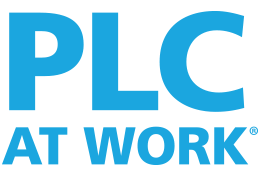DEMOGRAPHICS
Woodbine Community School District (WCSD) is a Model PLC at Work® district located in Woodbine, a rural community situated along the Boyer River in western Iowa. WCSD comprises one elementary and one high school serving the families of Woodbine and the surrounding areas.
447 Students
- 38.3% free or reduced lunch
- 11.0% special education
Woodbine's CHALLENGE
Beginning in the fall of 2020, Woodbine Community School District (WCSD) set out to improve adult agency and student achievement in a personalized manner. This started with revising the district’s mission and vision. A team made up of board members, community members, administration, staff, and students came up with a new school vision of “forging innovative alliances and pathways” and a new mission of “providing an environment where all are welcome and given access to personalized, unparalleled experiences that will positively shape futures.” Newly hired superintendent Justin Wagner brought his enthusiasm for, and experience with, PLC at Work® to WCSD, determined to bring the district to next-level success through the proven PLC at Work process of continuous school improvement.
“We are blessed to have a wonderful, energetic staff. They were very overwhelmed at times, especially with the pandemic unfolding all around us. But people felt comfortable with the leadership. There was trust and a caring environment.”
IMPLEMENTATION
During the 2020–2021 school year, a guiding coalition consisting of staff and administration from various grade levels and subject areas collaboratively reviewed the PLC at Work process. District leadership attended a virtual PLC at Work Institute and returned with a plan to share the online sessions in a whole-staff professional development day. This kick-started a districtwide commitment to the PLC journey. That commitment catapulted the district’s leadership team into creating a 13-step road map to form a personalized learning experience for all K–12 students.
Once the mission and vision were established, the next steps on the road map were to solidify the district’s collective commitments in the form of district values and goals–foundational tenets that proved to be critical anchors for the next two years of work.
One crucial takeaway from the PLC at Work Institute was the awareness of an overwhelming amount of standards for teachers to cover and students to learn. Having such an unattainable goal served no purpose but to frustrate staff and students. A key step for WCSD staff was to identify essential standards in their content areas and then align those with state standards. The entire district’s essential standards are kept in a shared spreadsheet so staff at the next grade level knows what is expected of students in that subject area.
Administration and teachers spent significant time the following summer building proficiency rubrics for each essential standard. Building-wide collaborative teams grouped by grade level and subject area started to engage in inquiry-based discussions centered around mastery—a practice that now occurs continuously. Formative assessments aligned with essential standards have become vital to monitor student learning. This allows collaborative teams to assess often and immediately implement instructional changes designed to further student achievement.
WCSD has also implemented Tiger Learning to support students’ unique needs. “Students are allowed to move at the speed of their own learning as they reach proficiency,” says Wagner. “This provides natural extension for students and frees up valuable, limited class time for teachers to work in small groups with students who struggle to attain proficiency.”
To support students struggling to reach proficiency in essential standards, grade-alike and subject-alike teams create SMART (specific, measurable, attainable, relevant, time-bound) goals, such as a certain percentage of students will reach proficiency on an identified standard by the end of a specified month. “This aligns to our district’s academic goal of having all students reach proficiency on all essential standards by the end of the school year,” says Wagner.
RESULTS
“We fundamentally believe the education system is broken,” says Wagner. “We believe that if you put good people in a bad system, the system wins everytime. It was important for us to create a system of personalization and student ownership of their learning, and that is exactly what we have done.”
“We are blessed to have a wonderful, energetic staff. They were very overwhelmed at times, especially with the pandemic unfolding all around us. But people felt comfortable with the leadership. There was trust and a caring environment.”
Highlights
2019–2020
- The statewide proficiency rate of fourth grade students receiving free and reduced lunch was 59%, while Woodbine’s proficiency rate was 71%.
- 73% of Woodbine third grade students on free and reduced lunch were proficient compared to 56% in the state.
2020–2021
- Woodbine eighth grade proficiency rate was 15% higher than the state’s in English, 6% higher in math, and 18% higher in science.
2021–2022
- 66% of fifth grade students on free and reduced lunch at Woodbine were proficient compared to 46% in the state.
Percent Proficiency in ELA: Free and Reduced Lunch Students at WCSD and Statewide
Percent Proficiency in Math: WCSD Students and Students Statewide
WHY PLC AT WORK®?
Professional learning communities (PLCs) are schools that empower educators to work collaboratively in recurring cycles of collective inquiry and action research to achieve better results for the students they serve.


